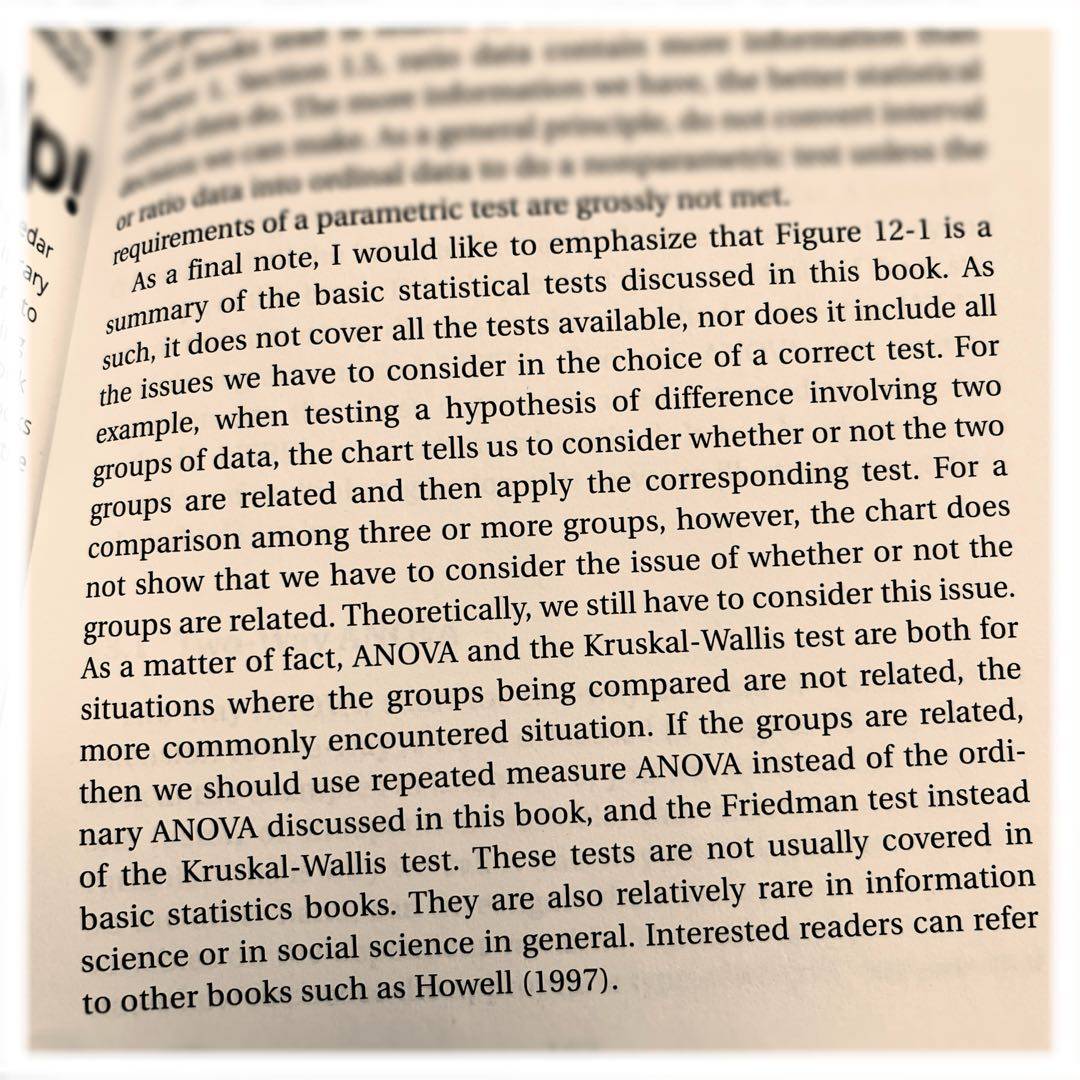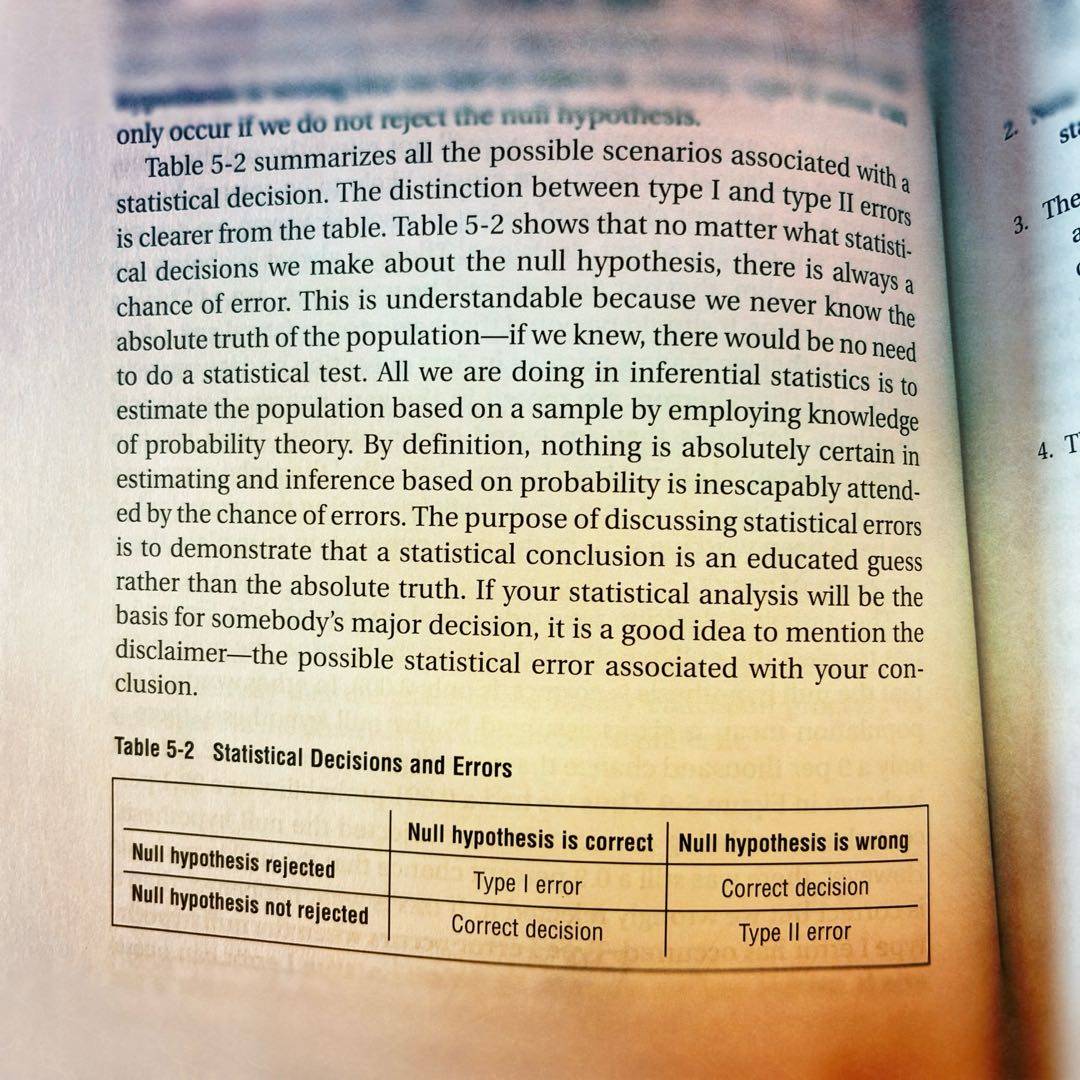
“As a matter of fact, ANOVA and the Kruskal-Wallace test are both for situations where groups being compared are not related, the more commonly encountered situation. If the groups are related, then we should use repeated measure ANOVA instead of the ordinary ANOVA discussed in this book, and the Friedman test instead of the Kruskal-Wallis test. These tests are not usually covered in basic statistics books.”




















